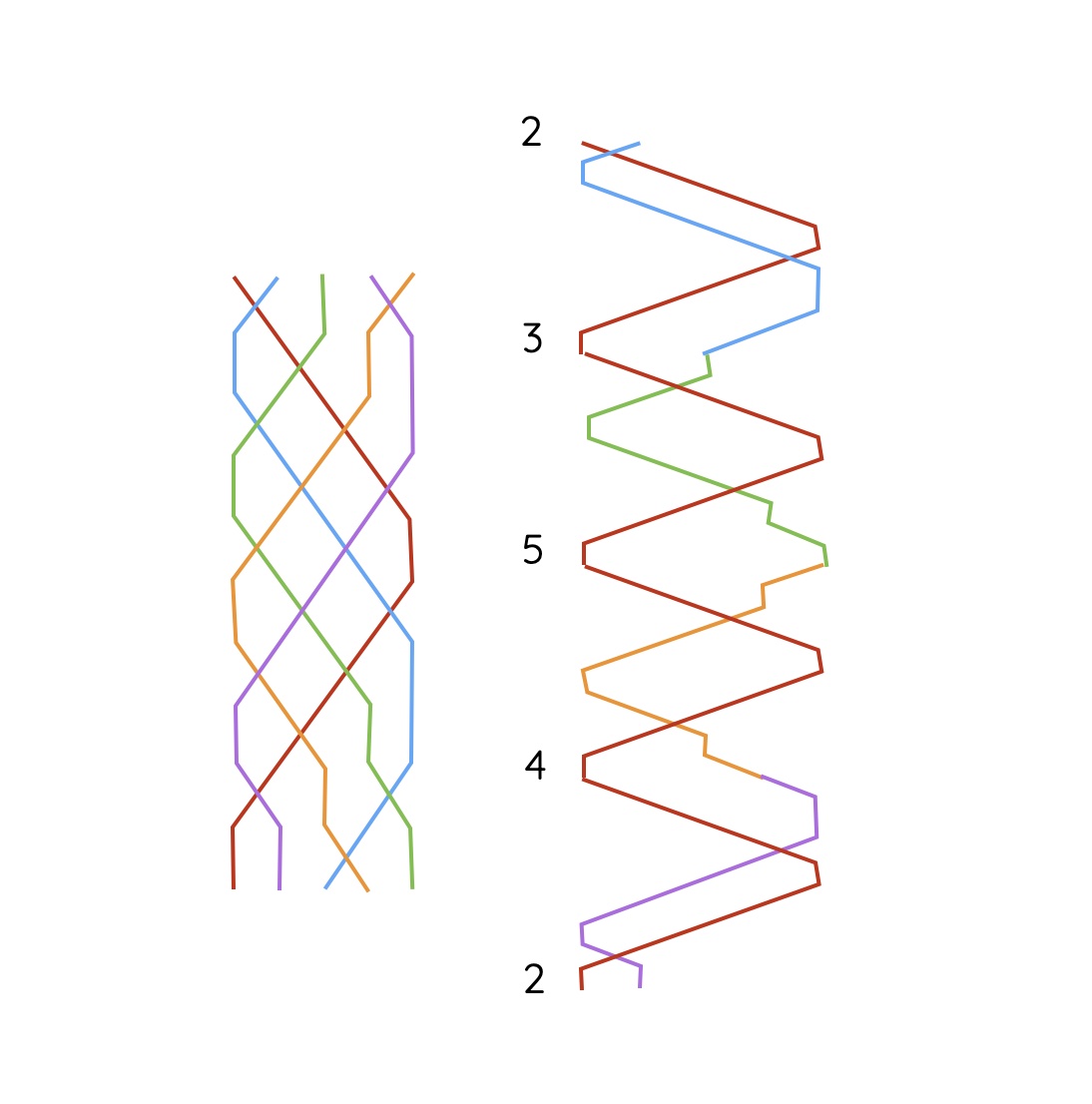
The Line
Shipway Place is a simple doubles method which is one change different from Reverse Canterbury, although far less commonly rung.
Like Reverse Canterbury, it consists of a place in 3rds at the first and last changes before the lead end.
The place in 4ths moves out one place into 5ths a change later/earlier… making 3 blows in 5ths.
An extra blow is made in 4ths around 5ths… instead of long 5ths.
- Standard 2nds place (125) lead end…
The place bell order is the reverse of plain bob… i.e 2 3 5 4.

The Treble
Because there is so much plain hunting, the bells are the same both going up and down, so it is an ideal method for learners to practice on.
The coursing order is the reverse of plain bob… 2 3 5 4.
For the working bells the treble will help with orientation.
If you pass in 1-2: you are making 2nds!
After passing in 2-3: make thirds… become 4th place bell and make 3 blows behind.
Pass in 3-4: make 4ths, 5ths, 4ths, becoming 5th place bell.
When you pass in 4-5: make 3 blows behind and down to make 3rds becoming 3rds place bell.
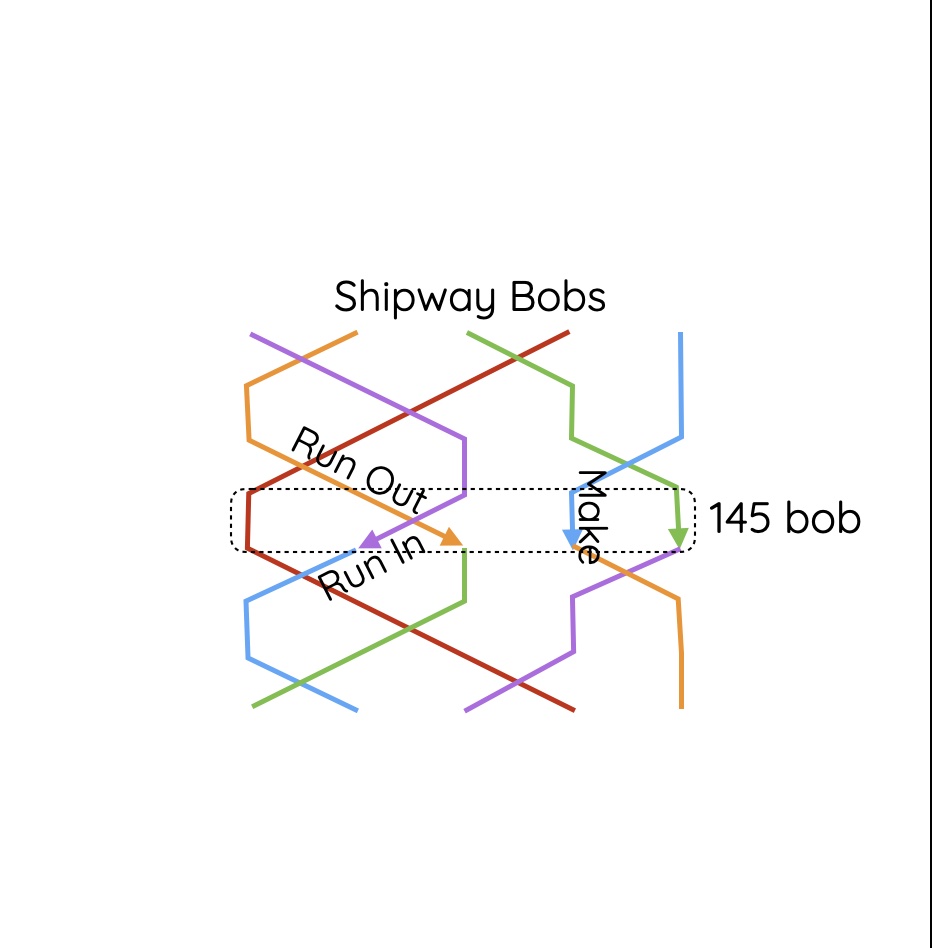
Bobs
The Bobs are remarkably similar to Reverse Canterbury… i.e. 1 4 & 5 make a place.
As normal, bells beyond 4th place are unaffected.
The bell in fourths ‘makes the bob’ (2 in 4ths from and to the back)… This links with the 3 blows.
The bells which run in and out, will either be making thirds just before running in, or will make thirds just after running out…. either way, both go back to lead!
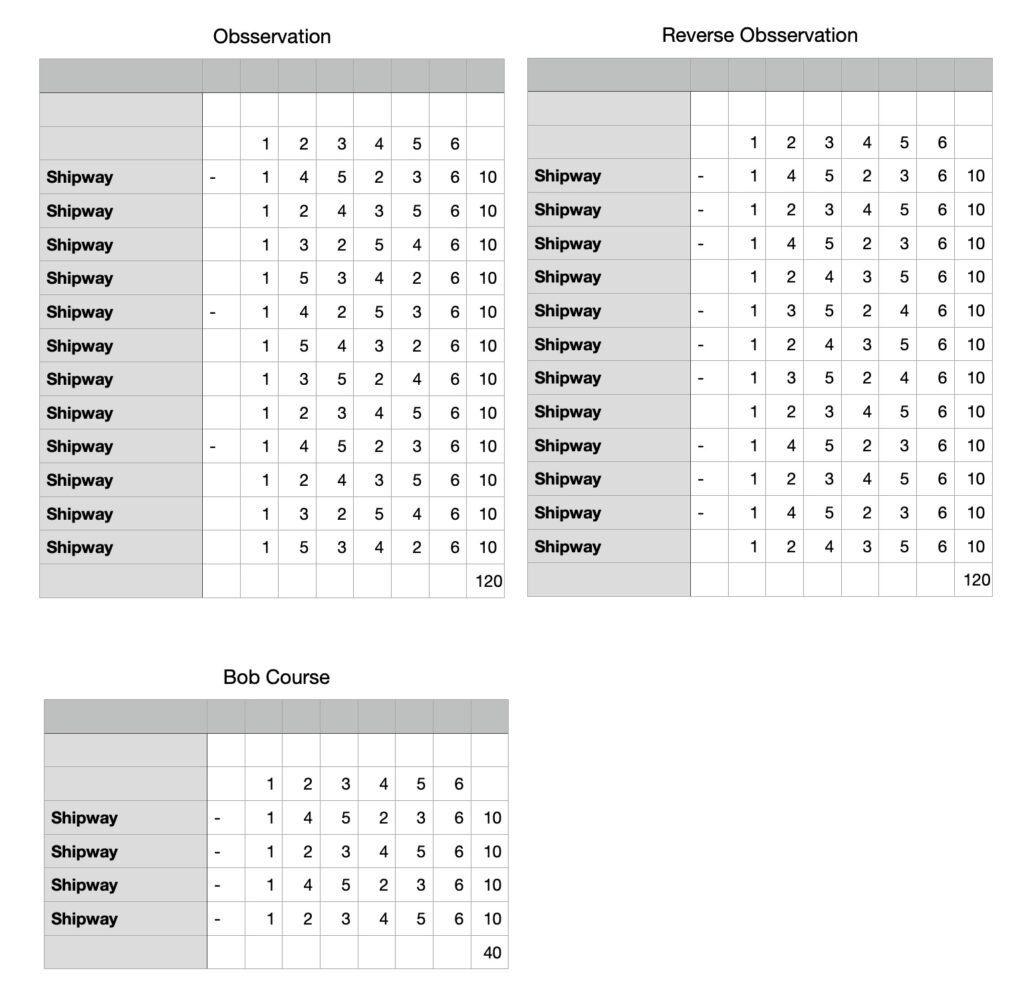
Touches
As it is similar to Reverse Canterbury (coursing order and Bobs) it has the same touches…
There are eight possibilities for calling 120, based on two simple scenarios each of which can be applied to any of the 4 working bells:
Call one of the bells as observation 3 times…. this involves calling when make 4ths, 5ths, 4ths.
Calling a Bob every lead except when unaffected…. i.e. 4ths,5ths, 4ths, and repeating 3 times
If you add 4th bob to scenario 2, it will become a Bob course.
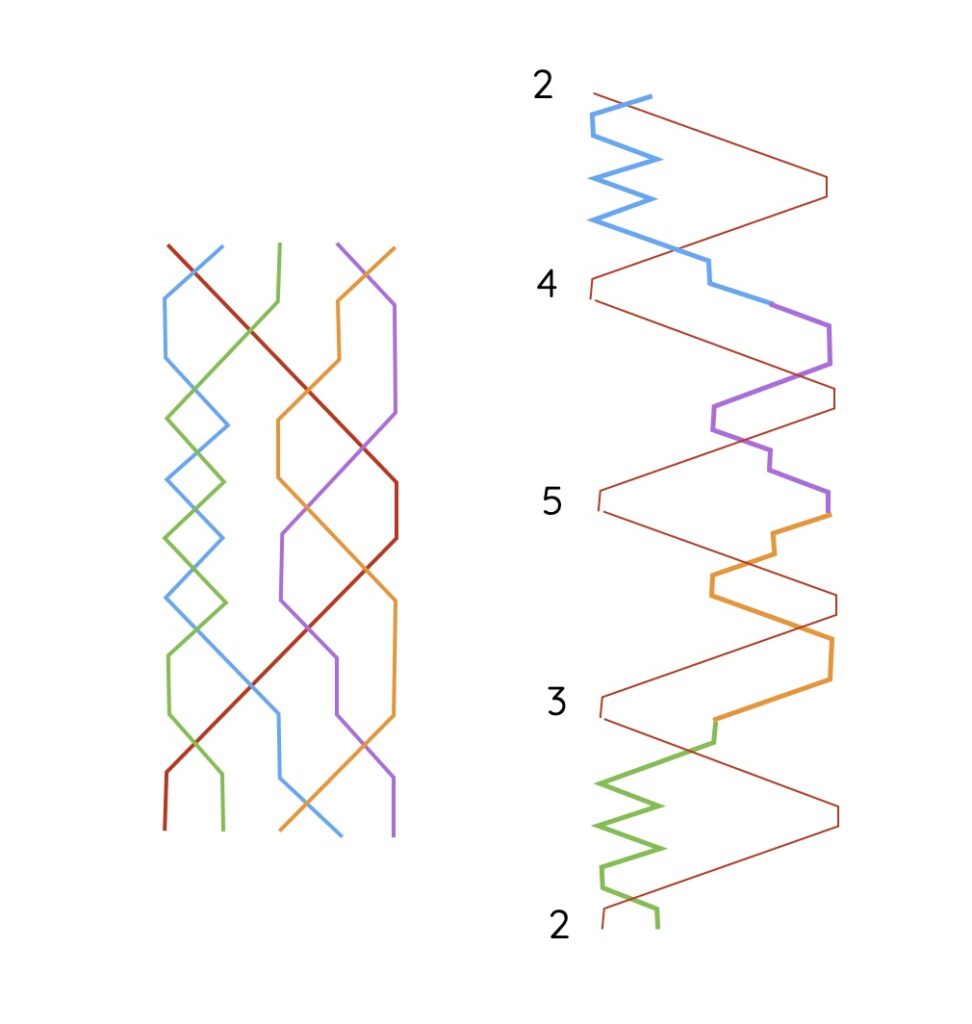
The Westminster II Line
Westminster II is most closely related to St Nicholas. The difference is the back work is based on Shipway Place.
Like St Nicholas, the front work consists of double dodges either side of making 2nds around the treble.
At the end of the front work, make 3rds as per St Nicholas, but then hunt out and make an extra blow in 5ths instead of making a place in 4ths.
Because of this, the middle portion of the back work is 4ths, 5ths, 4ths instead of 4 behind.
After this, again make 3 blows at the back before 3rds and in to the front work.

The Treble
The treble is always very important and it is not different with these methods…
Because the bells are either doing back or front work, the treble will pass bells in a different order on the way up and down.
On the way up – a,b, c,d,
The return order – c,d, a,b.
This information will be useful to a learner who has limited rope site, but should not cause any issues for anyone else.
Much more important is the fact that each bell will pass the treble as per Reverse Canterbury… so this will help an experienced ringer to navigate if they momentarily get distracted.
If you pass the treble in 4-5 (i.e. last), you make 3 blows in 5ths and then to 3rds place bell and the front work.
Passing the treble in 3-4, make 4ths, 5ths, 4ths, becoming 5th place bell in the process.
When you pass the treble in 2-3, make 3rds, become 4th place bell and start the back work.
Pass the treble in 1-2 and you are making 2nds!

Bobs
The Bobs are nearly the same as Reverse Canterbury… i.e. 145 make a place.
As normal, bells beyond 4th place are unaffected… so the 4ths, 5ths, 4ths part does not change.
The bell in fourths makes the bob (make 2 in 4ths from and to the back). This links with the 3 blows behind.
The bells which run in and out, will either be making thirds just before running in, or will make thirds just after running out…. either way, both go back to lead and more front work!
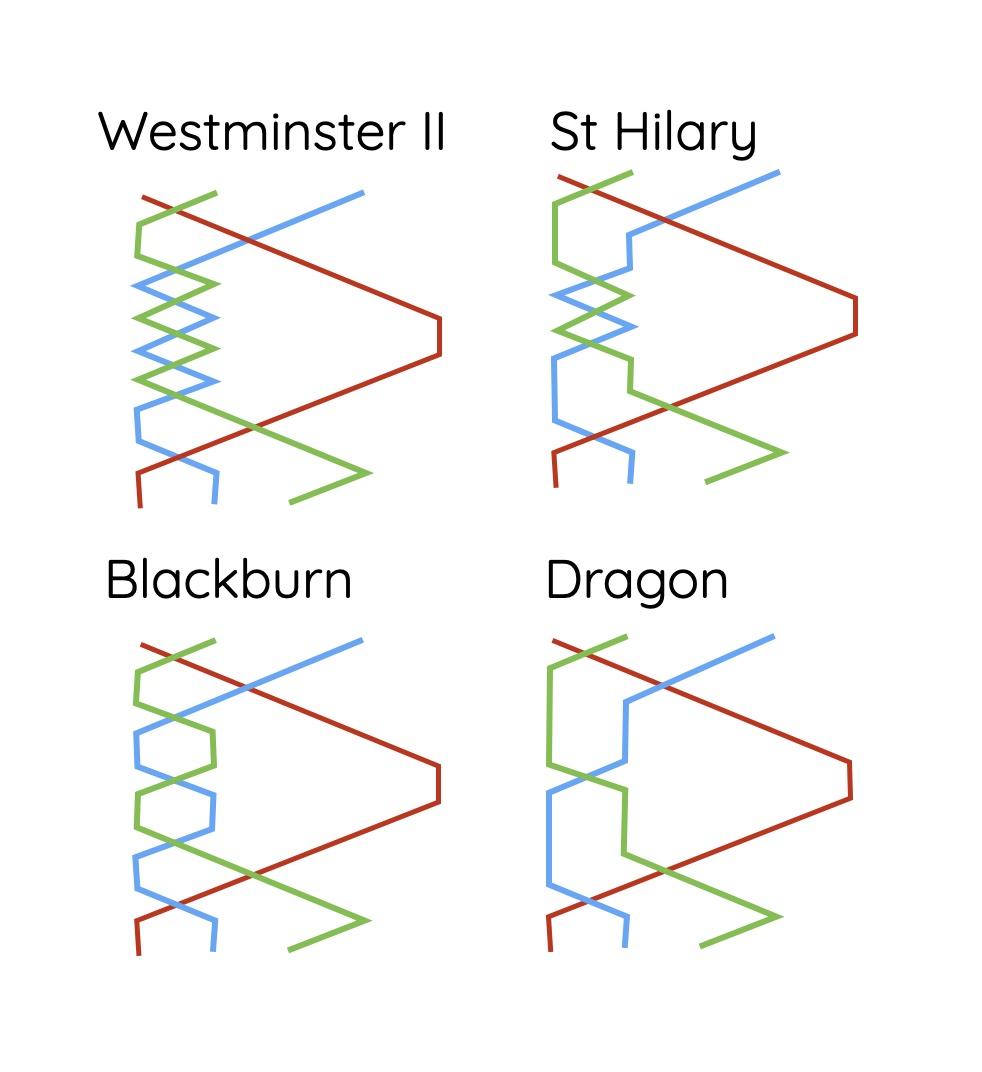
Different Frontworks
This is a group of methods… most commonly rung as doubles, which include a front and back work split.
The back work is consistent across the whole group and is very closely related to Shipway Place.
The front work varies… at doubles level, there are only 4 possible front works, but as the number of bells increases, so do the possibilities for more and varied front works.
Westminster II has a pair of dodges.
Blackburn a set of places.
St Hilary has an inverted dodge. It is the most complex and can feel ‘wrong’.
Dragon is the simplest with a single cross half way… so 4 blows and 3 blows… or vice versa.
An entire lead will be completed by just 2 bells… which swap in/out at the lead end.
Westminster and St Hilary are very closely related… in that they include dodges.
Blackburn and Dragon are both place based.
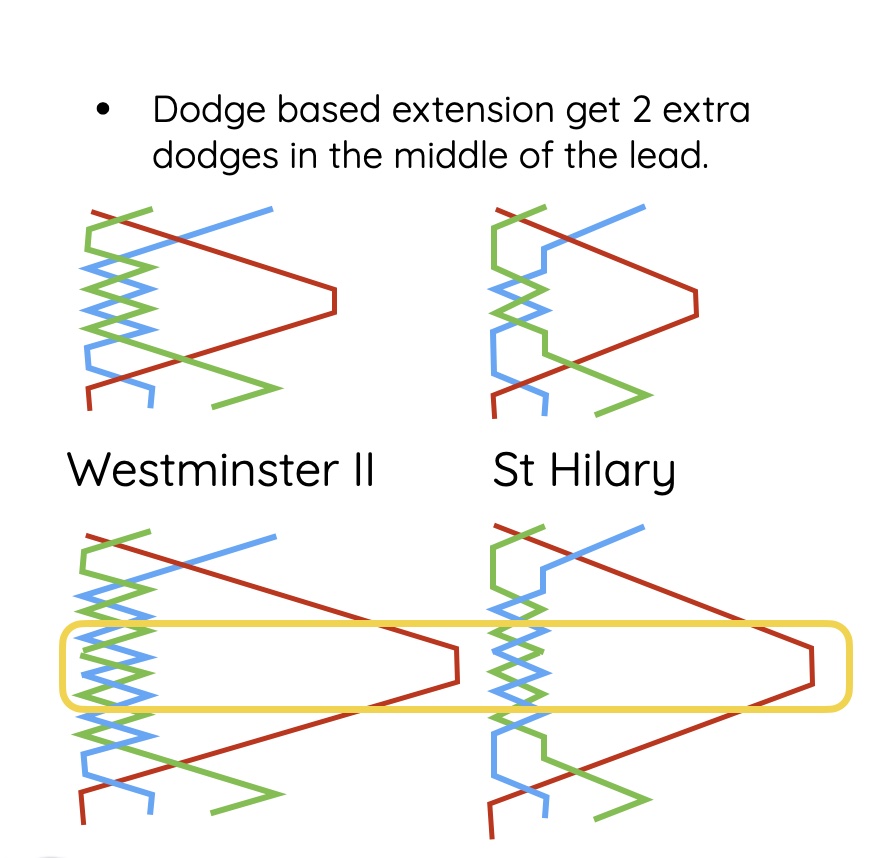
Extending to higher numbers...
The extension to Triples or Caters is done by adding in extra dodges in the middle portion.
Because we have to accommodate two more bells, we need to extend the central section which is not ‘Plain Bob’.
We do this by adding in two more dodges…
So Westminster II will now have 4 dodges instead of 2.
St Hilary will keep the three blows in lead and the last extra blow in second’s, but will now have three dodges in-between not 1.
The extension to caters or cinques will also work the same way… so 4 or 6 extra dodges will be added to cope with the 4 or 6 extra bells over and above those in doubles.
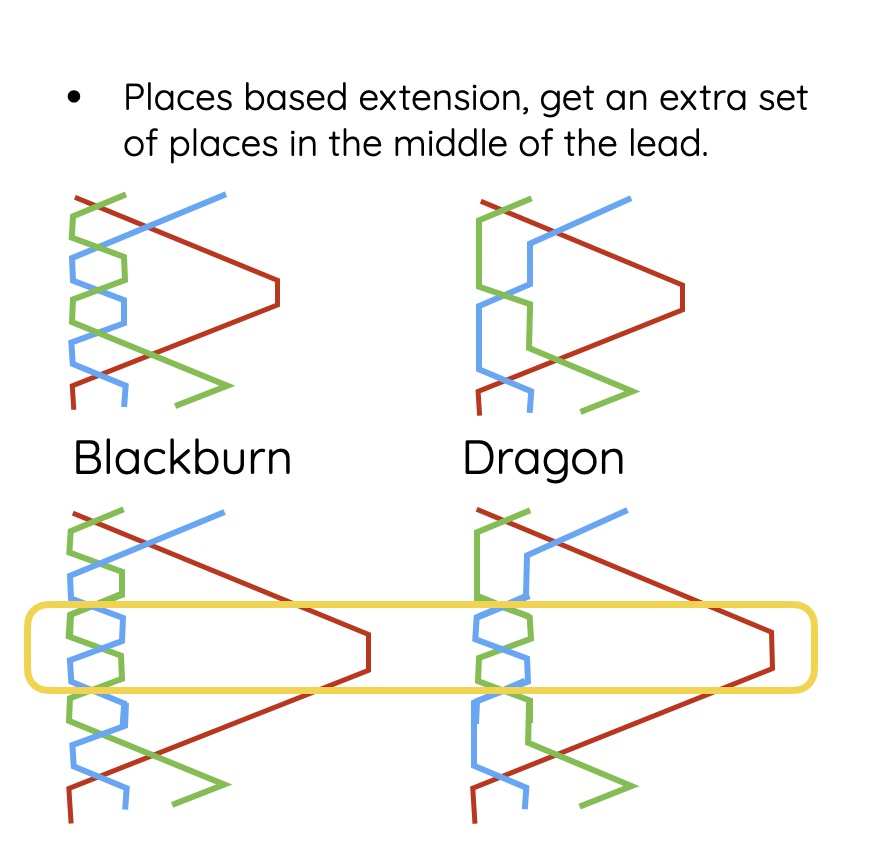
Extending to higher numbers...
The triples extension of Blackburn and Dragon is similar and involves adding 2 more places… one for each extra bell.
So Blackburn now has 2 sets of places not 1…
…and Dragon has the extra places put in between the 4 blows of lead and 3 blows in seconds.
The extension to caters and cinques involves adding 2 or 3 sets of places, one for each extra pair of bells.
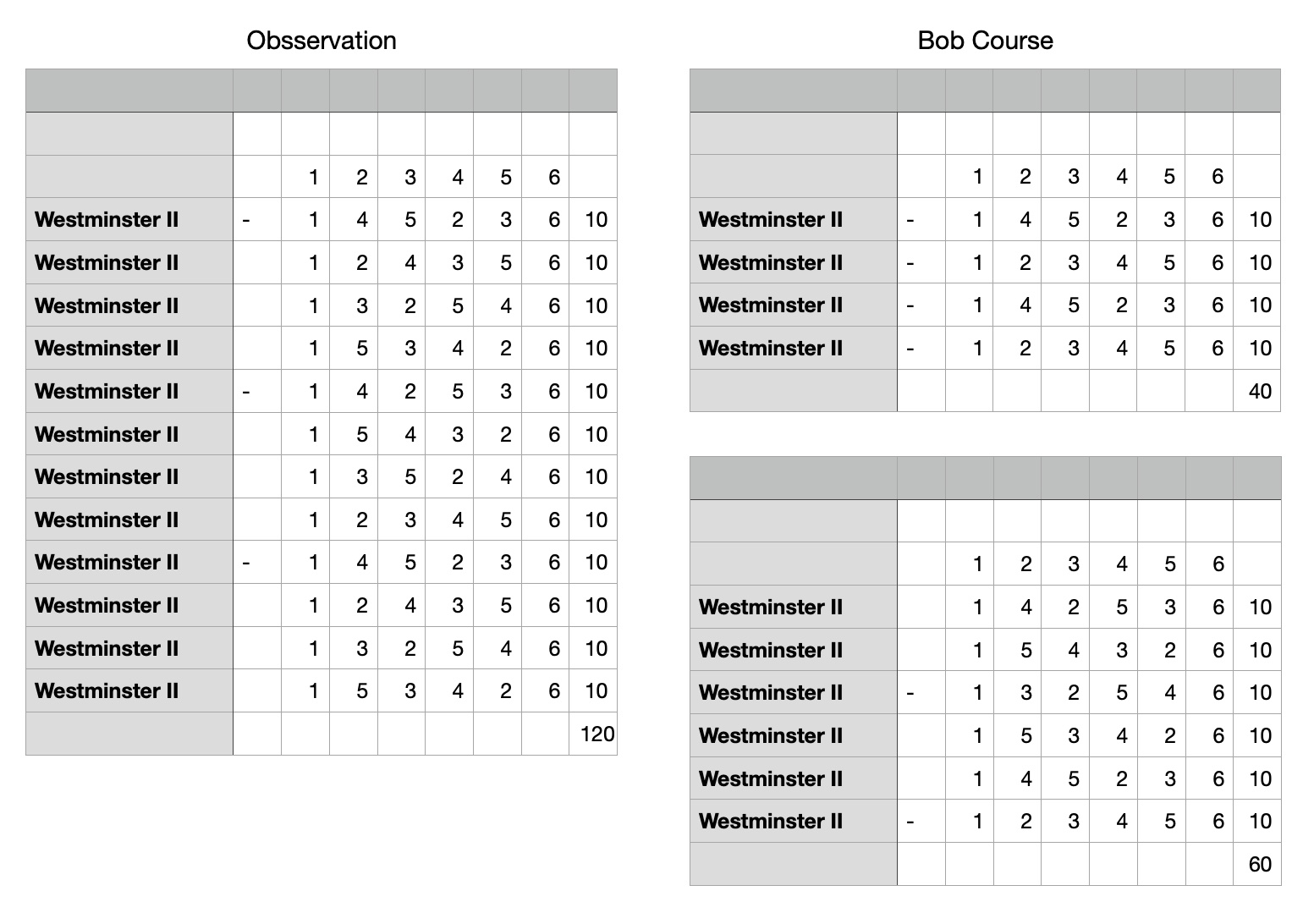
Touches
Like St Simon’s or St Nicholas, there are four possibilities for calling 120,. All follow the same principle…
Call one of the bells as observation…. this involves calling when make 4ths, 5ths, 4ths in the middle of the back work.
Calling a Bob every lead will come around after 2 leads.
If you want to ring touches on higher numbers, then any St Nicholas touch will work nicely for these methods too!
If you want to try extending these methods, the links below will show you the line for Shipway Place Triples. There is also a link to a very musical composition for St Nicholas/Westminster II or any of the other possible front work alternatives.
If you search Westminster II in the CCCBR Library, you will then be able to find all the named (and unnamed) alternatives.
